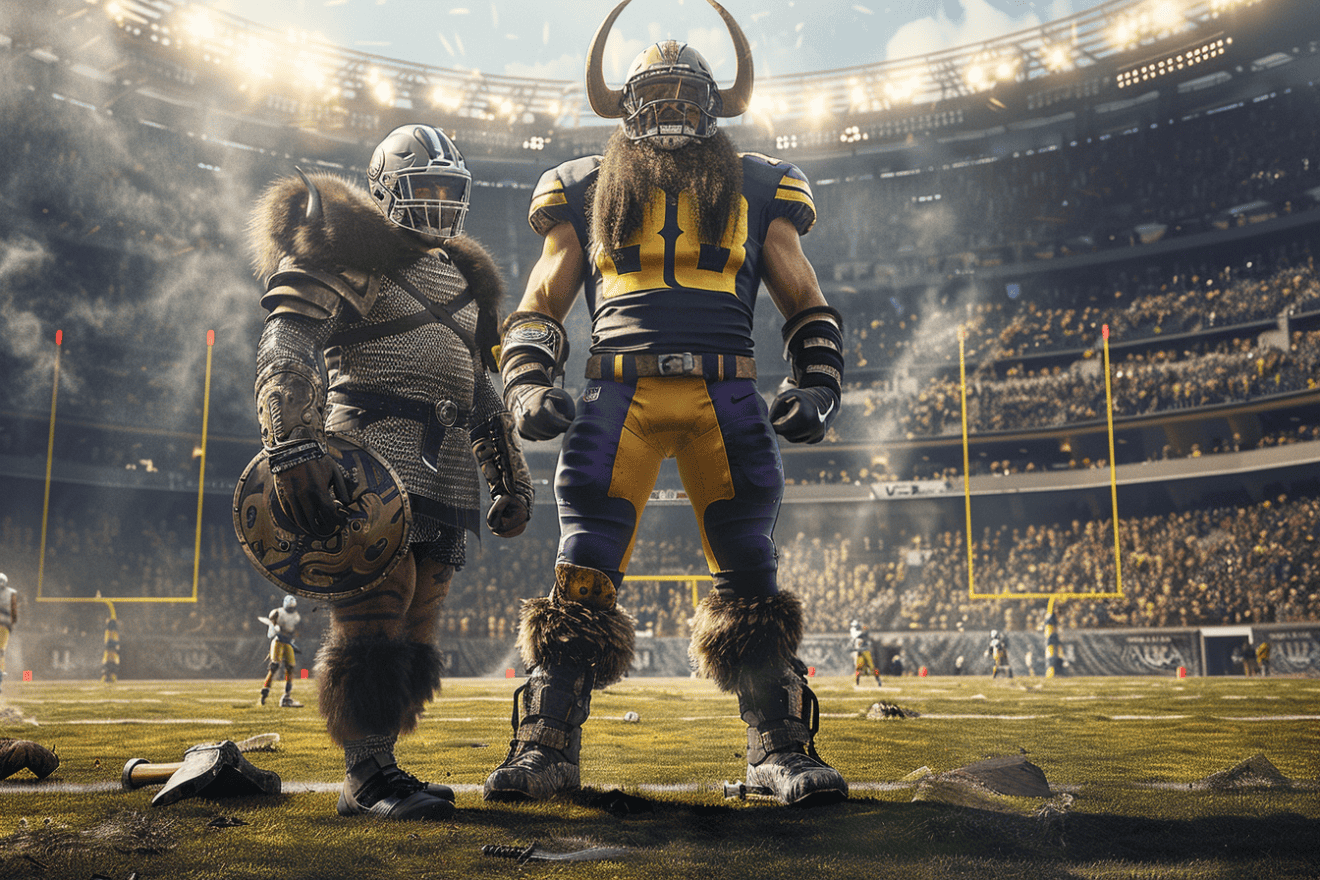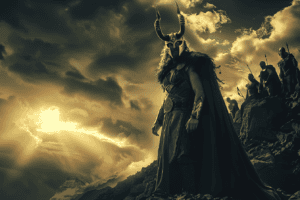In the heart of the United States, a symbol of Scandinavian pride thrives, juxtaposed against the backdrop of a distinctly American passion—football.
The Minnesota Vikings, a team steeped in Nordic heritage, embodies an enduring cultural legacy that transcends sports.
Founded by local businessmen in the early 1960s, the team’s identity is deeply rooted in the region’s history, and its name invites further exploration.
What drove this unusual intersection of cultural influences, and how have the Vikings become synonymous with Scandinavian America?
The Nordic Roots of Minnesota

Located in the Upper Midwestern United States, Minnesota’s cultural heritage is deeply rooted in its Scandinavian settlers, who brought with them a rich tradition of Nordic customs, language, and folklore that would eventually influence the state’s identity and, ultimately, its NFL team’s name.
In the mid-19th century, a significant influx of Norwegian and Swedish immigrants arrived in Minnesota, attracted by the state’s fertile land, abundant natural resources, and economic opportunities.
These settlers brought with them their unique cultural practices, including their language, music, and art. As a result, Minnesota’s cultural landscape was forever changed, with Scandinavian traditions and customs becoming an integral part of the state’s identity.
The influence of these early settlers can still be seen today, from the state’s numerous Nordic festivals to its Scandinavian-inspired cuisine.
This cultural heritage would eventually play a significant role in the naming of the Minnesota Vikings, an American football team that would go on to become an iconic symbol of the state’s Nordic roots.
The Birth of a Football Team

In 1961, Max Winter, a Minneapolis businessman, and Bill Boyer, a local sports journalist, spearheaded the effort to bring a professional football team to Minnesota.
They formed an ownership group, which included other local businessmen, and began petitioning the National Football League (NFL) for a franchise. After several years of negotiation, the NFL awarded Minnesota a franchise in 1960, with Winter and Boyer’s group being granted the team.
The team’s name, the Vikings, was chosen to reflect the state’s Scandinavian heritage. The name was suggested by a local journalist, and it quickly gained popularity among Minnesotans. The team’s colors, purple and gold, were also chosen to reflect the state’s Nordic roots.
The Vikings played their first game in 1961, losing to the Chicago Bears 37-13. Despite the loss, the team quickly gained a loyal following, and by the mid-1960s, they’d become a competitive force in the NFL. Under the leadership of coach Bud Grant, the Vikings won four conference championships and appeared in four Super Bowls.
Vikings in the NFL

The Vikings promptly established their presence in the NFL, winning four conference championships and appearing in four Super Bowls under the leadership of Coach Bud Grant.
Their inaugural season in 1961 was marked by a 3-11 record, but they quickly turned things around, making the playoffs in 1964. The team’s early success was fueled by talented players like Fran Tarkenton, Carl Eller, and Jim Marshall.
The Vikings’ iconic purple and gold uniforms, designed by local artist Karl Huber, became a staple of the franchise.
The Vikings played their home games at Metropolitan Stadium in Bloomington, Minnesota, before moving to the Hubert H. Humphrey Metrodome in 1982.
The team’s most successful period was from 1969 to 1977, when they won 10 division titles and appeared in three Super Bowls. Although they lost each of those championship games, the Vikings remained a consistent playoff contender throughout the 1970s and 1980s.
As the team continues to evolve, their rich history and proud Scandinavian heritage remain an integral part of their identity in the NFL.
Scandinavian Cultural Influence

Scandinavian culture’s deep roots in Minnesota’s heritage greatly influenced the team’s name, logo, and overall brand identity.
The state’s strong Nordic heritage is a result of the large influx of Scandinavian immigrants who settled in the region during the late 19th and early 20th centuries. These immigrants brought with them their language, customs, and traditions, which have been preserved and celebrated in Minnesota to this day.
The Vikings’ name is a nod to the region’s rich Scandinavian history, paying homage to the seafaring warriors who explored and settled in the region.
The team’s logo, a stylized horned helmet, is also a nod to Scandinavian culture. The helmet is a modern interpretation of the traditional Viking helmets worn by ancient Scandinavian warriors.
The team’s colors, purple and gold, are also a reference to the region’s Scandinavian heritage, with purple symbolizing the rich cultural heritage and gold representing the state’s natural resources.
The Vikings’ brand identity is a reflection of the enduring impact of Scandinavian culture on Minnesota’s heritage, and a celebration of the region’s unique history and traditions.
The Vikings Uniform and Logo

Purple and gold uniforms, adorned with a stylized horned helmet logo, have become an iconic representation of the Minnesota Vikings’ brand identity.
The team’s colors are a nod to the rich Scandinavian heritage of the state, with purple symbolizing power and gold representing prosperity.
The horned helmet logo, designed by Minnesota native Karl Hubenthal, is a modern interpretation of the ancient Viking helmets worn by Scandinavian warriors.
The logo’s design is a tribute to the team’s commitment to honoring its namesake’s cultural significance.
The Vikings’ uniform has undergone several changes since the team’s inception in 1961. The original uniform featured a silver helmet with a purple and gold stripe, which was later replaced by the iconic horned helmet design.
Over the years, the team has introduced alternative uniforms, including a white jersey with purple and gold accents and a throwback uniform inspired by the 1960s design.
Despite these changes, the purple and gold colors and the horned helmet logo have remained a consistent part of the team’s branding, solidifying the Minnesota Vikings’ identity as a proud representation of Scandinavian culture in American football.
Skol Vikings: The War Cry

From beyond the gridiron to U.S. Bank Stadium, one rallying cry reverberates through the hearts of Minnesota Vikings fans: ‘Skol!’, a war cry rooted in ancient Scandinavian tradition. This battle cry, derived from the Old Norse word ‘skål,’ means ‘toast’ or ‘cheers.’
In Viking culture, skål was a ceremonial gesture, where warriors would raise their horns in celebration of victories or to honor their gods. The Minnesota Vikings adopted this war cry as a way to connect with their namesake’s rich heritage.
Today, ‘Skol Vikings’ is chanted by fans during games, echoing through the stadium as a symbol of team spirit and unity. The phrase has become an integral part of the team’s identity, with even the Vikings’ fight song incorporating the Skol chant.
This ancient Scandinavian tradition has been adapted to modern American football, creating a unique and intimidating atmosphere that opponents can’t ignore. As the Vikings take the field, their fans’ thunderous ‘Skol!’ reverberates, paying homage to the fierce warriors who inspired the team’s name.










Add Comment